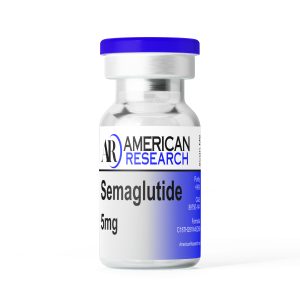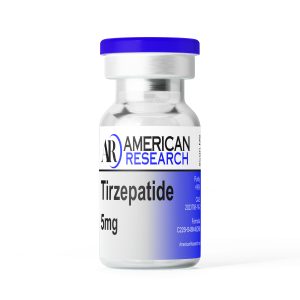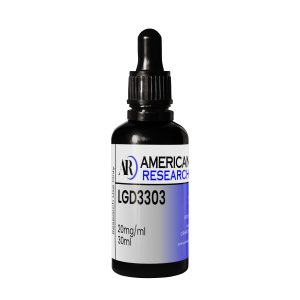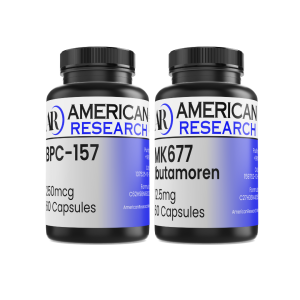Bundle – MK 677 12.5mg/cap 60 Capsules & BPC 157 250mcg/cap 60 Capsules
Availability: Ships today if ordered and paid by 7AM EST

Where to buy MK-677 (Ibutamoren) Capsules & BPC157 Capsules? Shop now for MK-677 (Ibutamoren) Capsules & BPC157 Capsules with exceptional quality and get more for less with our bulk sales. Quick 48-hour delivery available.
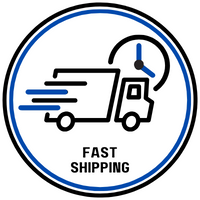
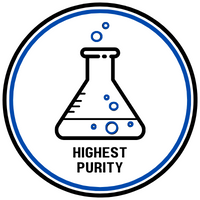

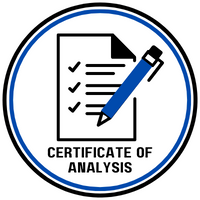

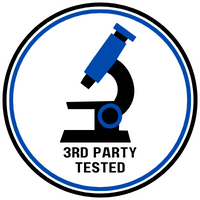
Properties
BPC-157 Properties
Chemical Formula: C62H98N16O22
Molecular Mass: 1419.5
Synonyms: Body Protection Compound 15, Bepecin, L-Valine, glycyl-L-alpha-glutamyl-L-prolyl-L-prolyl-L-prolylglycyl-L-lysyl-L-prolyl-L-alanyl-L-alpha-aspartyl-L-alpha-aspartyl-L-alanylglycyl-L-leucyl-
CAS Number: 137525-51-0
PubChem: 9941957
Total Amount of the Active Ingredient: 250mcg/cap 60 capsules
Shelf Life: 36 months
MK-677 Properties
Chemical Formula: C27H36N4O5S
Molecular Mass: 624.8
Synonyms: Ibutamoren mesylate, 159752-10-0, Ibutamoren mesylate, Crescendo
Molar Mass: 528.67
CAS Number: 159752-10-0
PubChem: 178024
Total Amount of the Active Ingredient: 12.5mg/60 capsules
Shelf Life: 36 months
Product Quality
Lab tests are occasionally published on the website.
You can have the product you bought from us tested at any HPLC licensed testing facility and if the results are negative, we will refund the following:
- Cost of HPLC test
- Total amount of the order + shipping fee
Peer-Reviewed Studies - BPC-157
Modulatory effect of gastric pentadecapeptide BPC 157 on angiogenesis in muscle and tendon healing.
Abstract
Angiogenesis is a natural and complex process controlled by angiogenic and angiostatic molecules, with a central role in healing process. One of the most important modulating factors in angiogenesis is the vascular endothelial growth factor (VEGF). Pentadecapeptide BPC 157 promotes healing demonstrating particular angiogenic/angiomodulatory potential. We correlated the angiogenic effect of BPC 157 with VEGF expression using in vitro (cell culture) and in vivo (crushed muscle and transected muscle and tendon) models. Results revealed that there is no direct angiogenic effect of BPC 157 on cell cultures. On the other hand, immunohistochemical analysis of muscle and tendon healing using VEGF, CD34 and FVIII antibodies showed adequately modulated angiogenesis in BPC 157 treated animals, resulting in a more adequate healing. Therefore the angiogenic potential of BPC 157 seems to be closely related to the healing process in vivo with BPC 157 stimulating angiogenesis by up-regulating VEGF expression.
Abstract
The 15 amino acid agent BPC 157, showing a wide range of organoprotective action in different experimental models, was used in our experiments in order to establish its influence on different elements connected with the healing process. Elements thought to be of greatest importance in the process of healing are formation of granulation tissue, angiogenesis and production of collagen. In our work we tested the influence of BPC 157 on: granulation tissue and collagen formation, on angiogenesis as well as on tensile strength development, using three experimental rat models: 1) skin incisional wounds; 2) colon-colon anastomoses; and 3) angiogenesis model with synthetic sponge implantation. The specimens were histologically assessed for collagen, reticulin and blood vessels using scoring and morphometry. In all experiments significant differences between BPC 157-treated animals and controls were found, showing a strong, promoting involvement of BPC in the healing process. It is worth noting that these effects were achieved by different routes of application, including intragastric and local, making BPC 157 a potentially useful therapeutic agent.
Abstract
Commonly, the angiogenic growth factors signify healing. However, gastrointestinal ulceration is still poorly understood particularly with respect to a general pharmacological/pathophysiological role of various angiogenic growth factors implemented in growth factors wound healing concept. Thereby, we focused on the stable gastric pentadecapeptide BPC 157, a peptide given always alone vs. standard peptidergic angiogenic growth factors (EGF, FGF, VEGF), and numerous carriers. Further, we reviewed how the gastrointestinal tract healing could be generally perceived (i) in terms of angiogenic growth factors, and/or (ii) through the healing of extragastrointestinal tissues healing, such as tendon, ligament, muscle and bone, and vice versa. Respected were the beneficial effects obtained with free peptides or peptides with different carriers; EGF, FGF, VEGF, and BPC 157, their presentation along with injuries, and a healing commonality, providing their implementation in both gastrointestinal ulcer healing and tendon, ligament, muscle and bone healing. Only BPC 157 was consistently effective in all of the models of acute/chronic injury of esophagus, stomach, duodenum and lower gastrointestinal tract, intraperitoneally, per-orally or locally. Unlike bFGF-, EGF-, VEGF-gastrointestinal tract studies demonstrating improved healing, most of the studies on tendon, muscle and bone injuries provide evidence of their (increased) presentation along with the various procedures used to produce beneficial effects, compared to fewer studies in vitro, while in vivo healing has a limited number of studies, commonly limited to local application, diverse healing evidence with diverse carriers and delivery systems. Contrary to this, BPC 157 – using same regimens like in gastrointestinal healing studies – improves tendon, ligament and bone healing, accurately implementing its own angiogenic effect in the healing. Thus, we claim that just BPC 157 represents in practice a pharmacological and pathophysiological role of various peptidergic growth factors.
Peer-Reviewed Studies - MK-677
Abstract
Obesity is associated with blunted GH secretion, unfavorable body composition, and increased cardiovascular mortality. The objective of this study was to investigate the effects of oral treatment with the GH secretagogue MK-677 on GH secretion and body composition in otherwise healthy obese males. The study was randomized, double blind, parallel, and placebo controlled. Twenty-four obese males, aged 18–50 yr, with body mass indexes greater than 30 kg/m2 and waist/hip ratios greater than 0.95, were treated with MK-677 25 mg (n = 12) or placebo (n = 12) daily for 8 weeks.
Serum insulin-like growth factor I (IGF-I) increased approximately 40% with MK-677 treatment (P < 0.001 vs. placebo). Serum IGF-binding protein-3 was also significantly increased (P ≤ 0.001 vs. placebo). GH and PRL (peak and area under the curve values) were significantly increased after the initial dose of MK-677. Significant increases, with the exception of peak PRL, persisted at 2 and 8 weeks of treatment. The increases in GH and PRL after the initial dose were significantly greater than the increase seen after multiple doses. Serum and urinary concentrations of cortisol were not increased at 2 and 8 weeks (P = NS, vs. placebo). Fat-free mass increased significantly in the MK-677 treatment group when determined with dual energy x-ray absorptiometry (P < 0.01) or using a four-compartment model (P < 0.05). Total and visceral fat were not significantly changed with active therapy. The basal metabolic rate was significantly increased at 2 weeks of MK-677 treatment (P = 0.01) but not at 8 weeks (P = 0.1). Fasting concentrations of glucose and insulin were unchanged, whereas an oral glucose tolerance test showed impairment of glucose homeostasis at 2 and 8 weeks.
We conclude that 2-month treatment with MK-677 in healthy obese males caused a sustained increase in serum levels of GH, IGF-I, and IGF-binding protein-3. The effects on cortisol secretion were transient. Changes in body composition and energy expenditure were of an anabolic nature, with a sustained increase in fat-free mass and a transient increase in basal metabolic rate. Further studies are needed to evaluate whether a higher dose of MK-677 or a more prolonged treatment period can promote a reduction in body fat.
MK-677, an orally active growth hormone secretagogue, reverses diet-induced catabolism
Abstract
The reversal of diet-induced negative nitrogen balance by GH suggests a possible therapeutic role for GH treatment in catabolic patients. A double-blind, randomized, placebo-controlled, two-period, cross-over study was designed to investigate whether MK-677, an orally active nonpeptide mimic of GH-releasing peptide, can reverse diet-induced protein catabolism. Eight healthy volunteers (ages 24–39 yr) were calorically restricted (18 kcal/kg·day) for two 14-day periods. During the last 7 days of each diet period, subjects received either oral MK-677 25 mg or placebo once daily. There was a 14- to 21-day washout interval between periods. During the first week of caloric restriction (i.e. diet alone), daily nitrogen losses were similar for both treatment groups (mean ± SE; MK-677 group −2.67 ± 0.40 g/day vs. placebo group− 2.83 ± 0.26 g/day). During the second week (diet and study drug), mean daily nitrogen balance was 0.31 ± 0.21 g/day in the MK-677 treatment group compared with −1.48 ± 0.21 g/day in the placebo group (P < 0.01). MK-677 improved nitrogen balance integrated over the 7 days of treatment; area under the curve day 8–14 nitrogen balance response was +2.69 ± 5.0 (SE) for MK-677 and −8.97 ± 5.26 g·day for placebo (P < 0.001). MK-677 produced a peak GH response of 55.9 ± 31.7 μg/L after single dose (day 1 of treatment) and 22.6 ± 9.3 μg/L after a week of dosing compared with placebo treatment peak GH values of approximately 9 (treatment day 1) and approximately 7 μg/L (treatment day 7). Following the initial 7-day caloric restriction, insulin-like growth factor-I (IGF-I) declined from 232 ± 25 to 186 ± 19 ng/mL in the MK-677 group and from 236 ± 19 to 174 ± 23 ng/mL in the placebo group. Mean IGF-I concentration increased significantly during MK-677 to 264 ± 31 ng/mL (mean for the last 5 days of treatment) compared with 188 ± 19 ng/mL with placebo (P < 0.01). No significant difference in IGF binding protein-2 was found between the MK-677 and placebo treatments. However, the mean in IGF binding protein-3 for the last 5 days of MK-677 treatment was also significantly increased to 3273 ± 330 ng/mL (mean ± SE) compared with placebo 2604 ± 253 ng/mL (P < 0.01). Neither the serum cortisol nor the PRL response was significantly greater after 7 days of MK-677 dosing compared with 7 days of placebo. MK-677 (25 mg) was generally well tolerated and without clinically significant adverse experiences. In conclusion, MK-677 reverses diet-induced nitrogen wasting, suggesting that if these short-term anabolic effects are maintained in patients who are catabolic because of certain acute or chronic disease states, it may be useful in treating catabolic conditions.
Effect of the Orally Active Growth Hormone Secretagogue MK-677 on Somatic Growth in Rats
Abstract
Purpose: Growth hormone secretagogues (GHSs) possess the ability to release growth hormone (GH) in the body. This study aimed to investigate the effects of MK-677, an orally active GHS, on somatic growth in rats.
Materials and methods: The serum levels of GH were measured after oral administration of MK-677 to confirm GH stimulatory effects. Body weight, body length, tibia length, epiphyseal plate width, and serum levels of insulin-like growth factor (IGF)-I were measured after oral administration of 4 mg/kg of MK-677 for 6 weeks to investigate growth-promoting effects.
Results: Oral administration of MK-677 at 4 mg/kg increased peak GH concentrations by 1.8-fold, compared to baseline. However, oral administration of MK-677 for 6 weeks did not increase body growth or serum levels of IGF-I. At 6 weeks after treatment, the GH response to MK-677 was abolished. Pituitary GH mRNA and hypothalamic GH-releasing hormone mRNA, and GH secretagogue receptor (GHSR) mRNA expression in the pituitary and hypothalamus did not differ between the control and treatment group. Somatostatin (SST) mRNA expression in the hypothalamus was markedly increased in the treatment group, whereas SST receptor (SSTR)-2 mRNA expression in the pituitary gland was decreased. Protein expression of hypothalamic GHSR, SST, and pituitary SSTR-2 showed patterns similar to those for mRNA expression.
Conclusion: Our results suggest that prolonged administration of MK-677 in rats does not promote growth despite the GH stimulatory effect of MK-677, which may be related to increased expression of SST in the hypothalamus. Further studies are needed to overcome the observed desensitization to GHS.
Shipping
USA
Canada
If your shipment was seized (International Orders), we will provide a 50% discount applicable on your next purchase. Please contact us for more information.
Disclaimer
The information provided above is not intended to substitute medical advice, diagnosis, or treatment. Should you have any questions regarding a medical condition, seek the advice of your physician or a qualified healthcare provider. In no case should medical advice be disregarded or delayed because of what you have read or seen. We bear no responsibility or liability for your use of any of our research compounds and products. Please note that they are being sold for research purposes ONLY. We do NOT condone any personal use.
Note: In some cases wherein the assigned top colors are out of stock, a different top color will be used to ensure that your order will not be delayed. Should you need assistance identifying the peptide vial that you received, please send us an email at [email protected].
ALL ARTICLES AND PRODUCT INFORMATION PROVIDED ON THIS WEBSITE ARE FOR INFORMATIONAL AND EDUCATIONAL PURPOSES ONLY.
The products offered on this website are furnished for in-vitro studies only. In-vitro studies (Latin: "in glass") are performed outside the body. These products are not medicines or drugs and have not been approved by the FDA to prevent, treat and/or cure any medical condition, ailment or disease. Bodily introduction of any kind into animals or human is strictly prohibited by law.
Additional information
| Weight | 0.5 lbs |
|---|---|
| How Many Bottles? | 1, 2, 3, 4, 5, 10, 20, 40, 100 |


